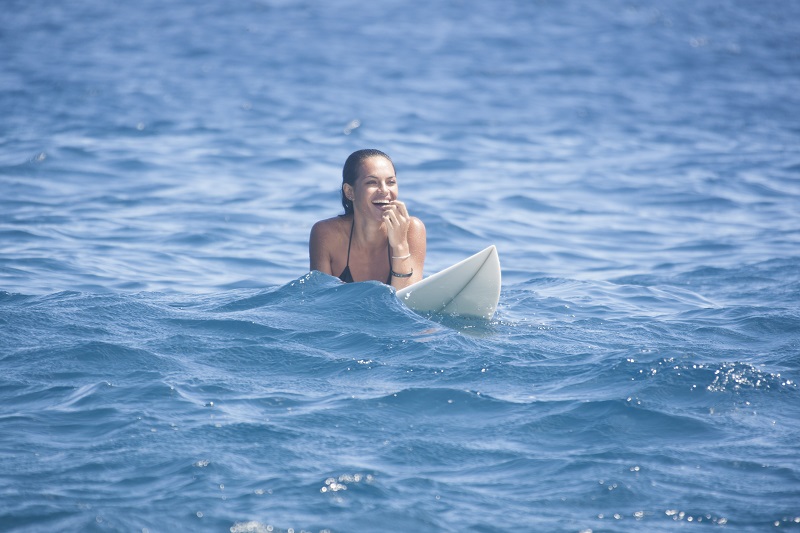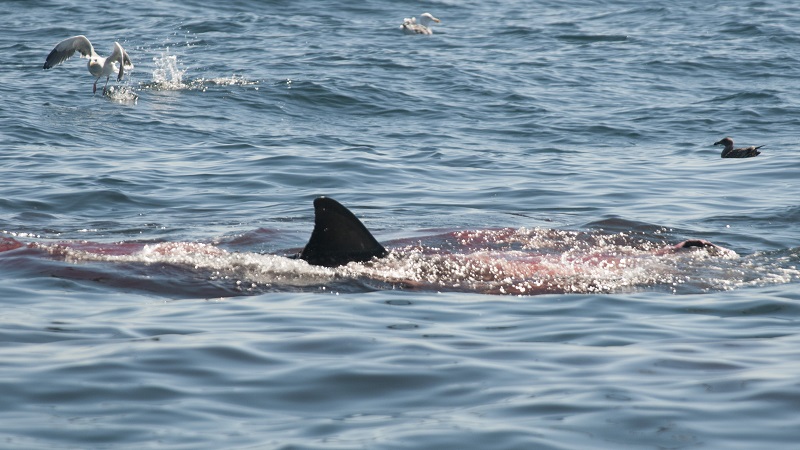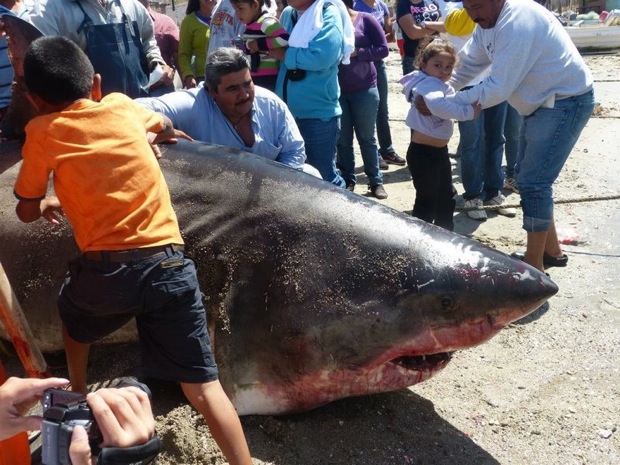
People across the globe have always been fascinated by California: The dream of being a Hollywood star, seeing the streets of San Francisco, visiting the blue Pacific and being around the beautiful people! Even the Beach Boys said California Girls are the prettiest girls in the world. Only one thing makes life on the coast of California less pretty for divers, surfers and swimmers—sharks! But according to a new study, the risk of a shark attack has dropped sharply.
The Bermuda Triangle in the Atlantic Ocean, Death Valley in the Mojave Desert or The Devil’s Teeth name for the Farallon Islands near San Francisco: Americans always have had a preference to give special places a special name.
For example, there is an area on the California coast they call The Red Triangle.

This area stretches 340 kilometers around the densely populated area of San Francisco—from Bodega Bay in the north, to the Big Sur region south of Monterey, and out to the Farallon Islands 43 kilometers away—forming a triangle. The special feature is that most of the shark attacks of the entire Pacific coast happen here and, therefore, the water in this area often turns blood red—the Red Triangle! The reason for this is the fact that the coast is populated by numerous seal species, the main prey of the Great White Shark.
That was not always the case. Russian seal-skin hunters made vigorous hunts in the 19th century and eradicated almost entire populations. In 1892 there were just 30 elephant seals left on the Farallon Islands.
Only after a law for the protection of animals was issued in 1911, the population recovered slowly. First on the Mexican island of Guadalupe, from there, the seals spread north. Thirty years later, the seals on the Channel Islands near Los Angeles also multiplied. Their descendants moved on to Año Nuevo Island north of Monterey, and later colonized again the Farallon Islands. Today, around 130,000 seals live off the Pacific coast of California, but during their migration, they are hunted by Great White Sharks.
Current studies
If you are afraid of sharks, you are not alone. Although toasters kill more people each year, the idea of being in the water with a big predator is a bit disconcerting, especially in California.
According to Ralph Collier from the GSAF, from 1900 until today there were 211 unprovoked shark attacks in California, 13 of them fatal. The Great White Shark, Carcharodon carcharias, has been positively identified as the culprit in 90 percent of the attacks.

The latest case to date: On November 24, 2017, Grigor Azatian was attacked by a shark while spearfishing in the Still Water Cove of Monterey Bay, probably a 4.5-meter Great White Shark. He was bitten several times in the thigh, but despite heavy blood loss, he has recovered.
Every time a reported shark attack appears in the news, it can cause panic. The risk of a shark attack was never high, but currently it is even lower than in the 1950s of the last century.
According to a study by Stanford University’s Hopkins Marine Station, the risk of shark attacks on the California coast has fallen by more than 91 percent since 1950. The study, published in “Frontiers in Ecology and the Environment,” rates the number of reported attacks in the state over the last 60 years against the number of people using the sea for swimming, diving, surfing and other sports. While the number of attacks in the state of California has remained relatively constant (about one attack per year in the 1950s, to one to two a year today), the number of people in the ocean has increased dramatically.
The risk of shark attack in California:
- For divers, it is 6,897 times more likely to end up in hospital with a decompression accident than a shark attack.
- The chances of a shark attack on a diver are 1 to 136 million.
- The chances of a shark attack on a surfer are 1 to 17 million.
- The chances of drowning for a water sportsman are 1,817 higher than dying from a shark attack.
“Right now, the chances of having a shark encounter are much lower than they were in the 1950s,” says Francesco Ferretti, a shark researcher studying human health effects on the ocean. The best hypothesis to explain this pattern, as already mentioned, is the amazing recovery of all seal species in California. Ferretti and his co-researchers suggest that white sharks now know that seals live in large groups in predictable areas such as the Farallon Islands or the Año Nuevo Islands north of Monterey Bay, and that they must swim there to find their prey.
It is very likely that sharks do not spend as much of their time these days as swimming up and down the coast looking for prey as they once did. As predators, sharks play a key role in marine ecosystems.
“The sharks are a kind of eco-police of the ocean,” says Ferretti. “They keep things in balance that would get out of hand without them.” The presence of top predators thus contributes to the stability and balance of fish stocks. For example, it is believed that the killing of sharks on the East Coast of the U.S. has contributed to the collapse of scallop fisheries in North Carolina because sharks kept the stingrays that eat scallops at bay.
Ferretti’s data is also practical. He says knowing about the ecology and movement of sharks does much more to reduce the risk of shark attacks than to kill sharks—something that has been tried in California, Hawaii, and other places in the past.
The risk of shark attacks is highest in northern California in October and November. For surfers, for example, the risk of surfing in March can be reduced by a factor of 25, and surfing in Southern California between Los Angeles and San Diego by more than 1,600 times.
This concludes part one of Shark Attacks in California. Part two of Shark attacks in California will focus on two theories of why surfers tend to have more negative interactions with sharks.
![]()
Christian Kemper is a TV journalist from Germany. He has been diving with and studying sharks for more than 20 years. He has written two books about shark attacks and one book about crocodiles. He is a freelance writer for 3 of the biggest diving magazines in Germany.
You can find his German Language book Strange Pool Friends on Amazon and at tredition.
He has also written a three part article about how cage diving with great white sharks began.


